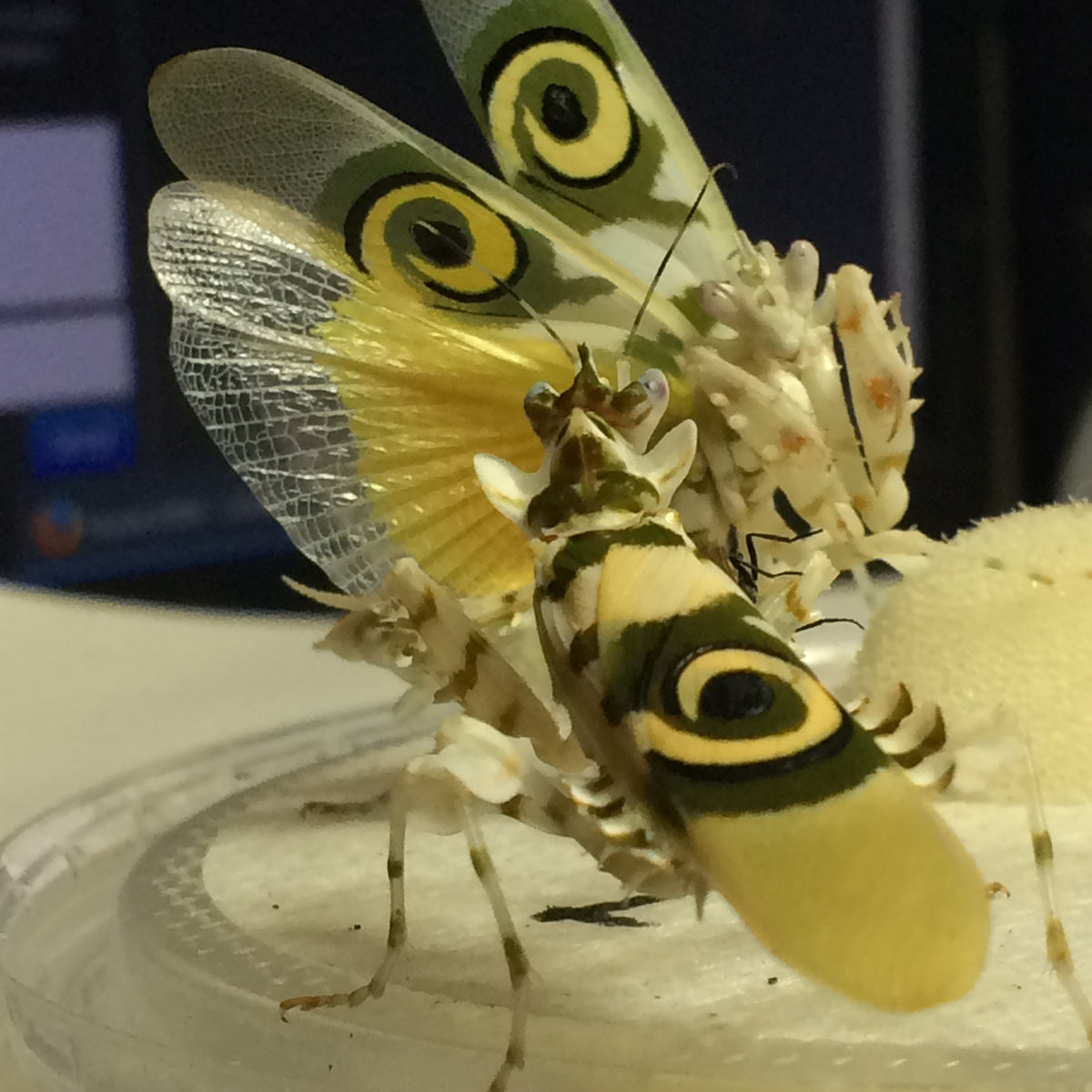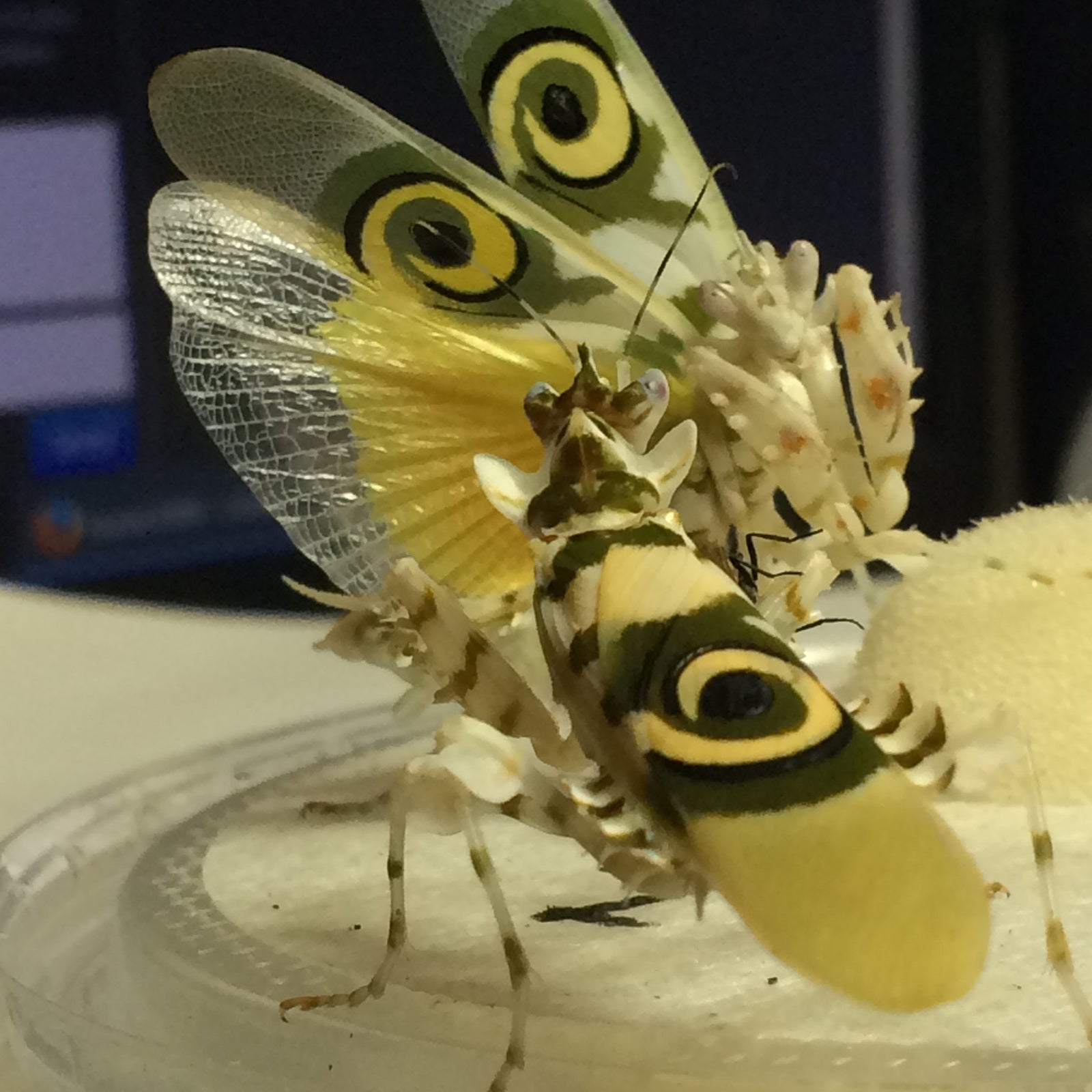
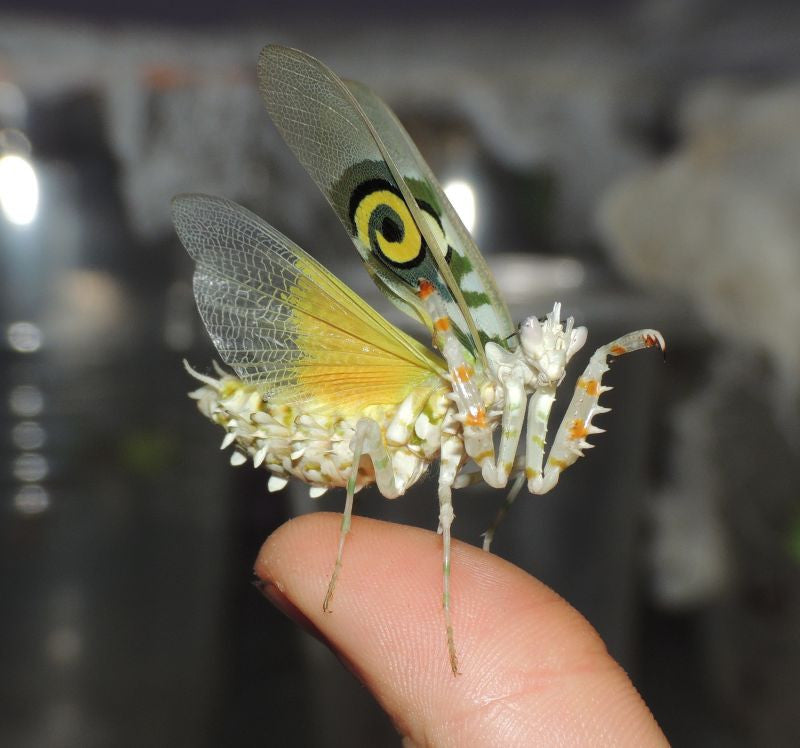
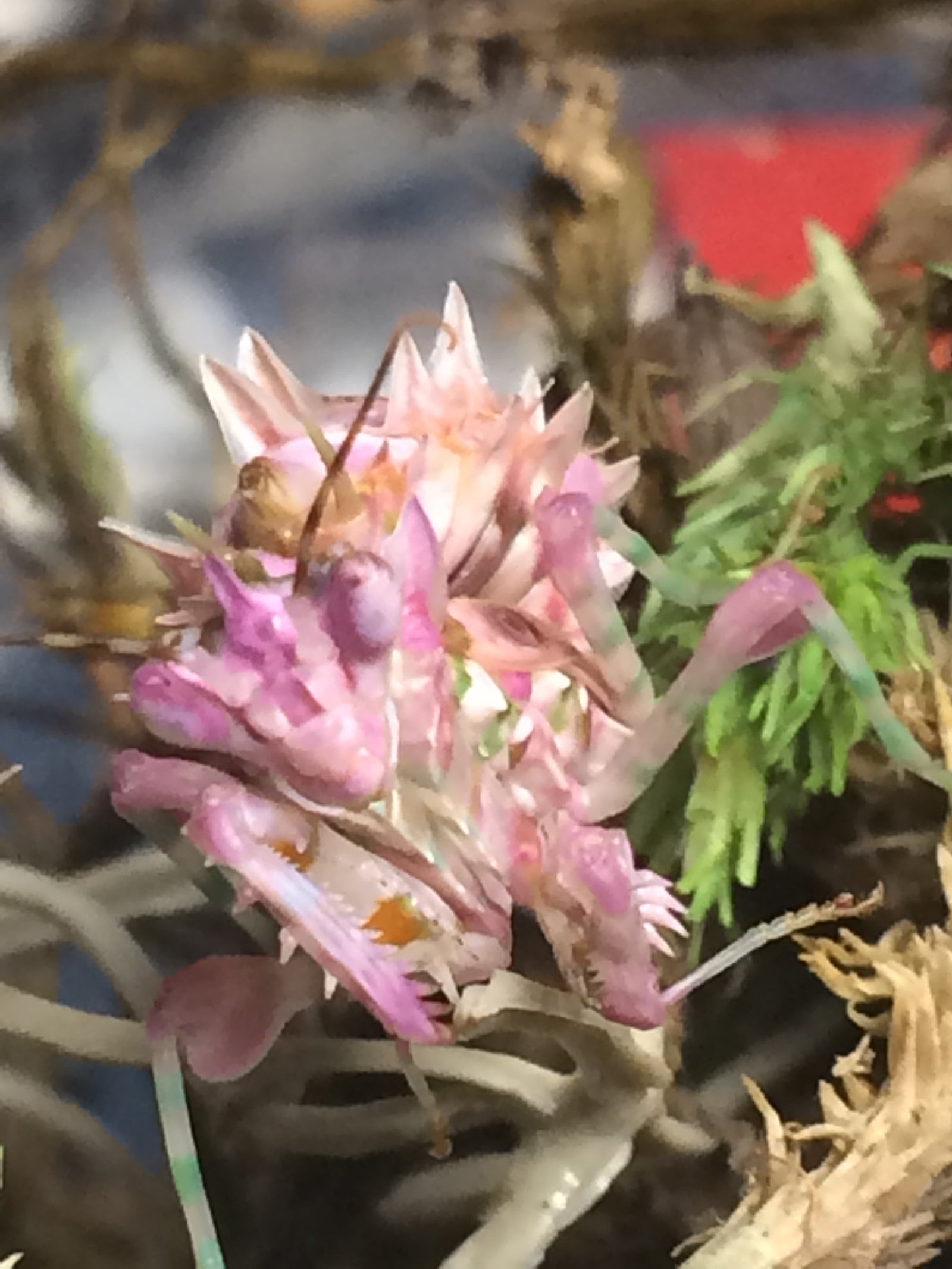
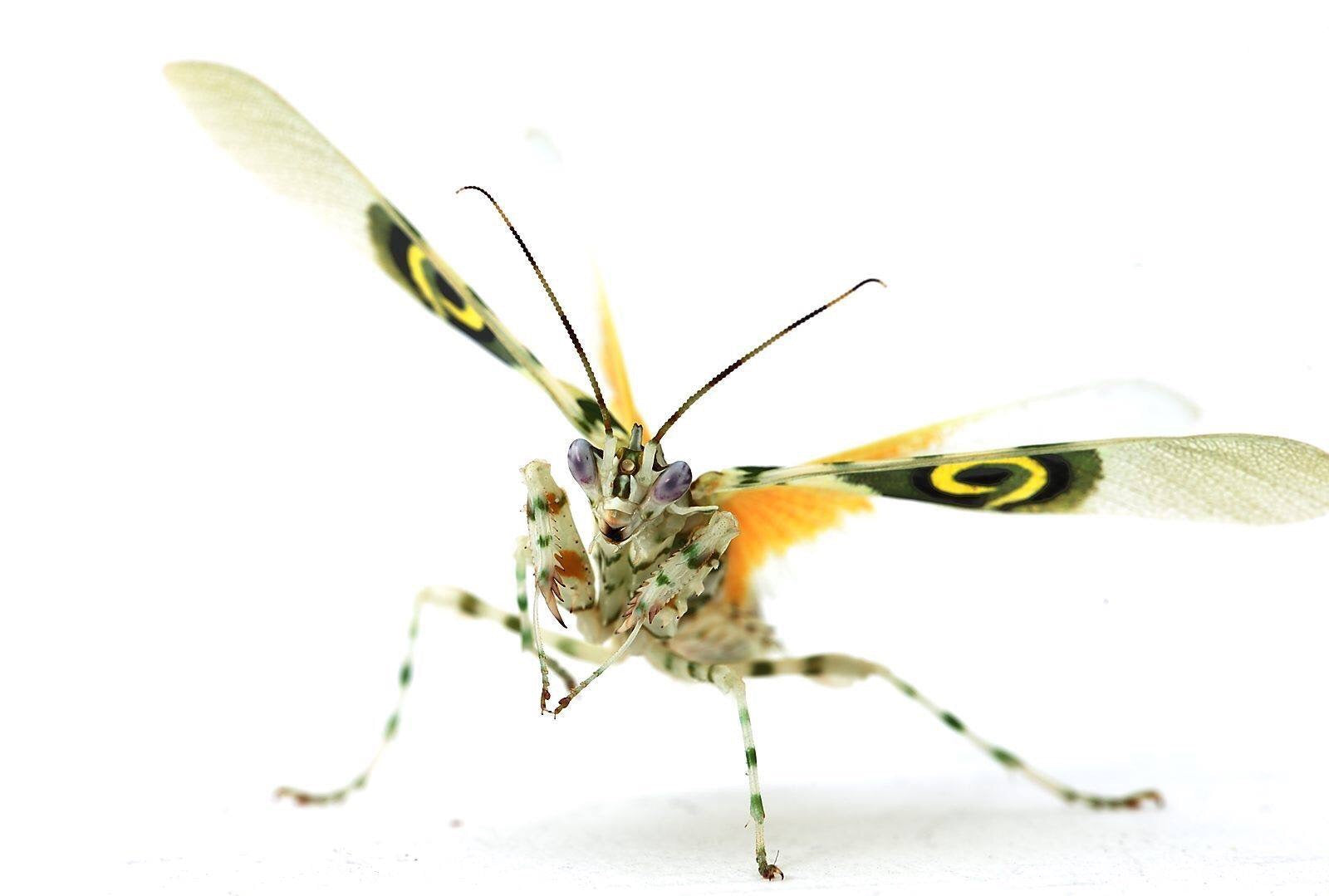
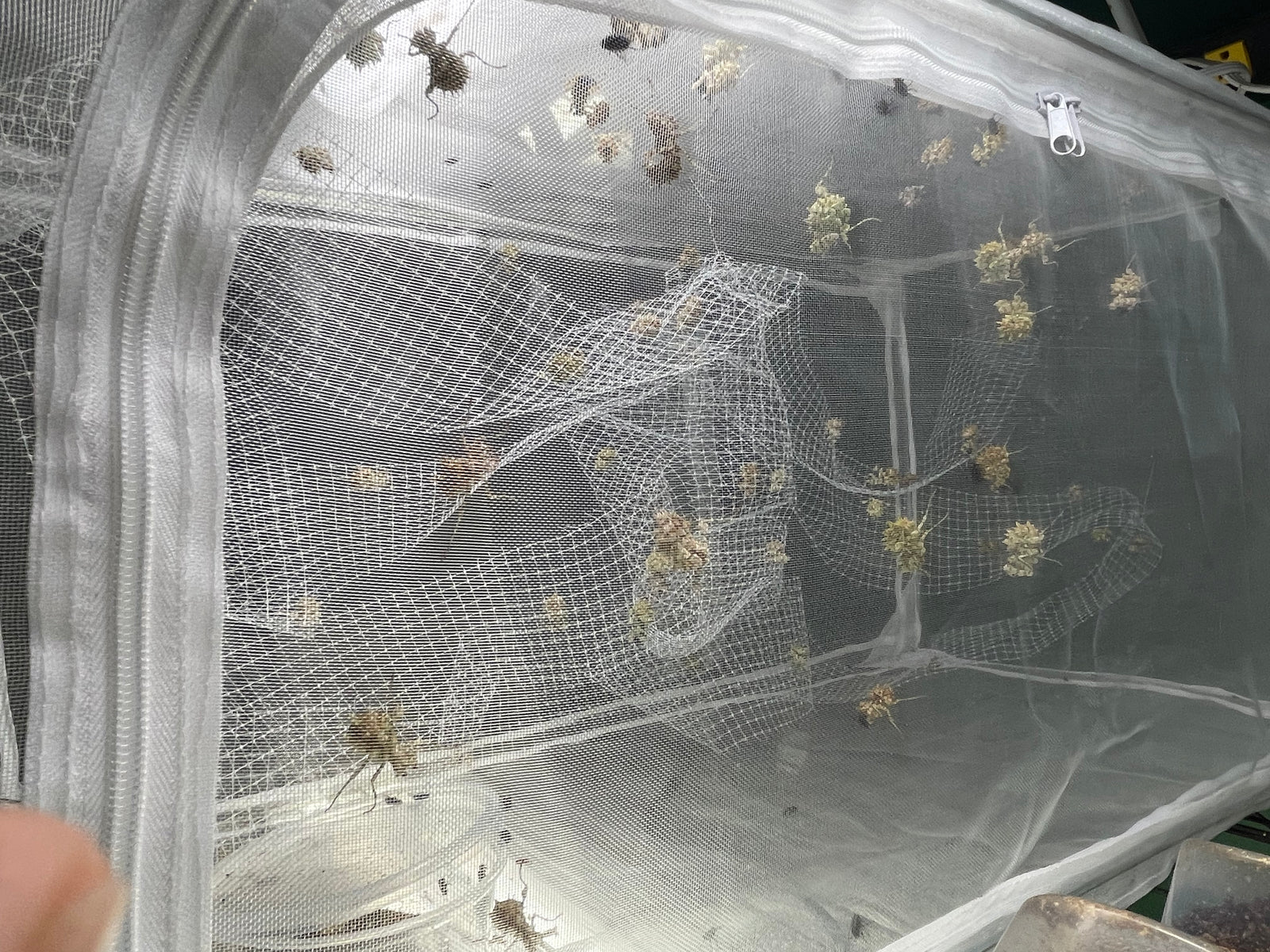
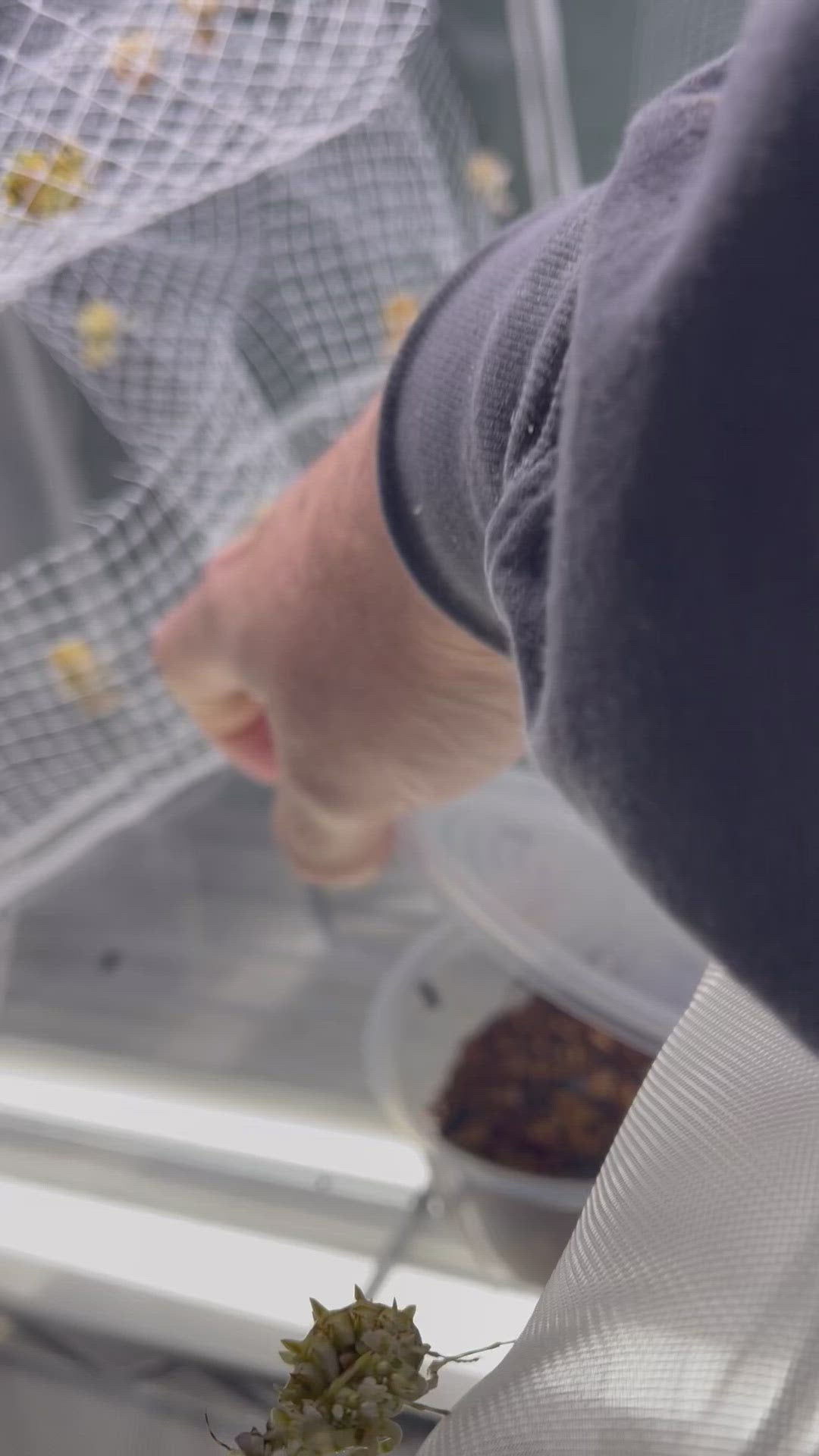
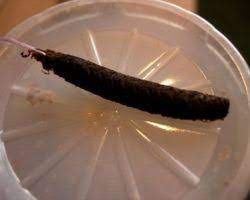
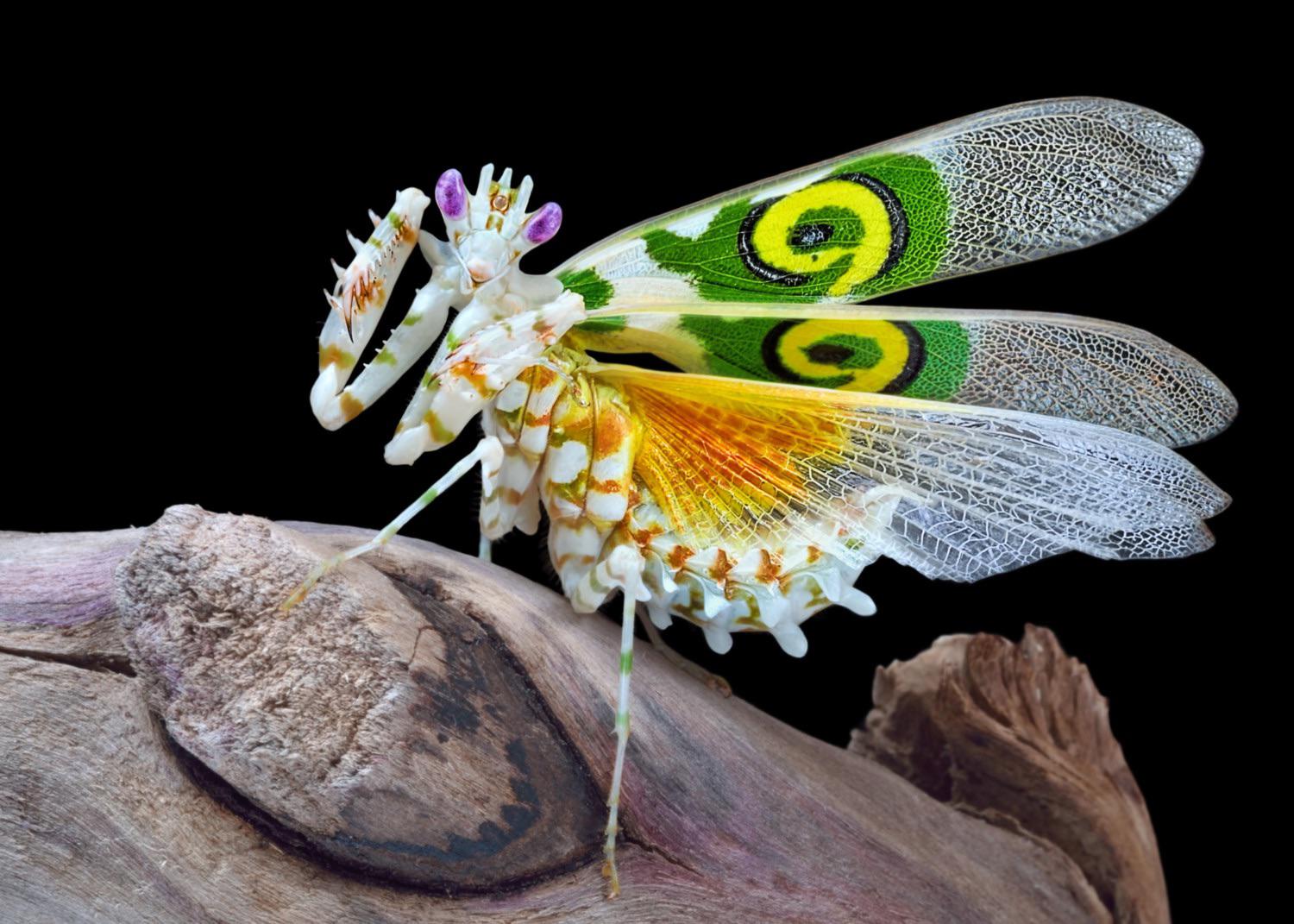
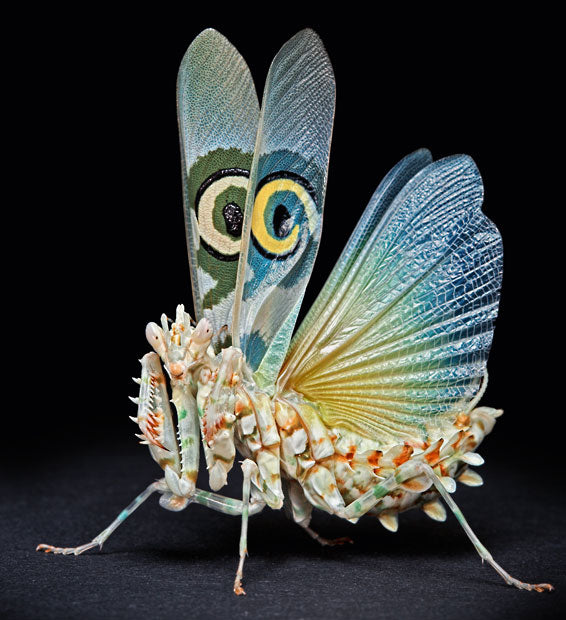
Pseudocreobotra wahlbergii Spiny Flower mantis
$37.50 - $300.00
Pseudocreobotra wahlbergii Spiny Flower mantis
P wahlberghi AKA #9
Pseudocreobotra wahlbergi, or spiny flower mantis, is a small Flower Mantis (1.5 inches or 38 millimeters) native to southern and eastern Africa.
The African Flower Mantis is usually colored white-green. Occasionally goes the white but pink or yellow over, depending on how it is kept moist and what surface it sits on. Thus, it can match the color of the flowers.
This Mantis will "Threat display" wings with large eyespots to deter attackers or if frightened. It's, of course, harmless and so interesting to witness
The adult has spiny structures on the underside of its abdomen, giving it its name. It is variable in color, typically greenish, but it can equally be yellowish, pinkish, or reddish. It has a striking spiral "9" mark on its forewings, providing a conspicuous black, green, and cream eyespot surrounded by a green patch. The hind wings are orange on the inner part and transparent on the outer part. The species is common in captivity and is easy to rear. The female lays egg cases almost three times its size.
Behavior
P. wahlbergi has a dramatic display in which it spreads its forewings, making itself appear larger and prominently displaying its eyespots to startle would-be predators. While at rest, it is well camouflaged and is a sufficiently good aggressive mimic of a flower that prey insects can attempt to pollinate it, at which moment the mantis seizes and eats them. The mantis can kill prey several times larger than itself
General
Scientific name: Pseudocreobotra wahlbergii
German Name: African Flower Mantis
Distribution: Eastern South Africa
Final size: males approximately 4 cm, females about 5 cm
attitude
Temperature: Day 25 - 30 ° C, night room temperature
Relative humidity: Tags 50 - 60%, at night to 70 - 80%
Recommended minimum size terrariums WxDxH: 20 x 20 x 30 cm
Aggressiveness towards conspecifics: Medium
Difficulty: Moderate
Biology
number molts to the adult stage: females about 8 (adult in L9), males about 7 (adult in L8)
Reaching maturity after molting Adult: females about 3 weeks, males about 2 weeks
Development time in ootheca: ca. 4-8 weeks
Hatching rate per ooth: up to 50 nymphs
*OOTHS are never guaranteed to hatch! They can take up to 10 weeks to hatch. We do assure you that they are fertile and captive-bred
Feeding
L1 / L2: Small fruit fly Drosophila melanogaster
L3: Large fruit fly Drosophila hydei
L4: Large fruit fly Drosophila hydei
L5 - L7 to adult: Bluebottle flies
*OOTHS are never guaranteed to hatch! They can take up to 10 weeks to hatch. We do assure you that they are fertile and captive-bred

